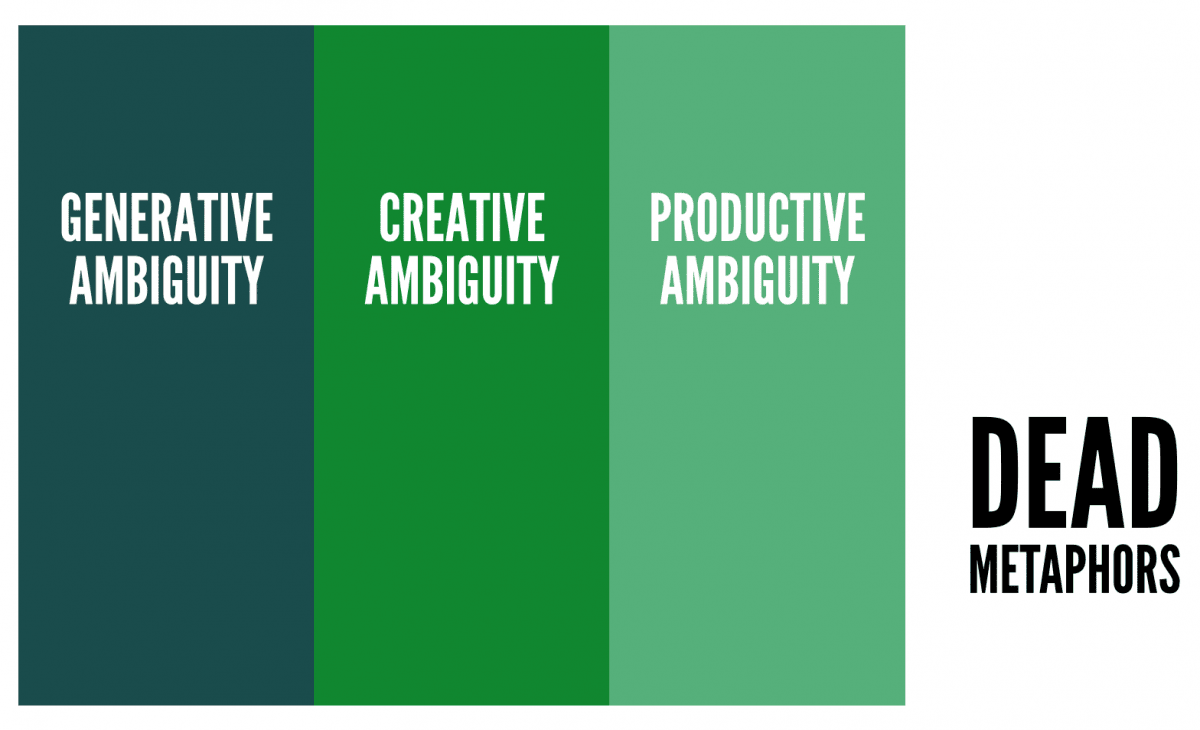TB871: Metaphor, ambiguity, and conceptual blending
Note: this is a post reflecting on one of the modules of my MSc in Systems Thinking in Practice. You can see all of the related posts in this category.
I’m managing to skip quite a few activities in this module because I’ve thought through the impact of metaphor and ambiguity before, in quite some depth. In fact, I’ve got a whole other blog on it. This post is prompted by the mention of ‘conceptual blending’ in the module materials:
Cognitive scientists Gilles Fauconnier and Mark Turner (2002) have written about what they call conceptual blending, which is the human mind’s general ability to match two or more different inputs – such as images, words, events, frames, identities or even embodied actions – and to selectively project elements from those different inputs and create a new, blended mental space that has its own structure that retains a connection to those original inputs. They share a range of examples where new mental spaces are produced, including life-stage rituals, sporting achievements and political commentary.
[…]
Significantly, the theory of conceptual blending argues that positions, such as ideas or arguments derived in the blended mental space, can have an effect on our thinking. Consequently, perceptions and judgements about situations involving any of the initial input spaces are modified. Metaphor seems to fit with this way of understanding the mind because it brings together two different notions into a single whole. The boss and dinosaur become an imaginary boss–dinosaur composite. Tutsi and cockroach become a single conceptual blended whole, which could then influence cognition and behaviour in relation to Tutsis or cockroaches.
(The Open University, 2020)

Very briefly, then, when we yoke together two ideas we create a zeugma or syllepsis — for example ‘digital literacy’. Or more simply, if we look at prehistoric example, the idea of a “lion man”. Is the emphasis on the first of these (digital/lion) or on the second (literacy/man)? In other words, are we talking about literacy of the digital, or digital forms of literacy. Likewise, are we talking about a man who act like a lion, or a lion that resembles a man?
At the overlap of what something denotes and what it connotes is a space of ambiguity. This is where space is opened up for new ideas and creative/playful thinking. However, there are different types of ambiguity, which I’ve written about in length, including in my thesis, but which I’ll summarise here using this diagram:

Given that all communication is in some way ambiguous, what we’re trying to avoid are what Richard Rorty calls “dead metaphors”. These are terms which may have had some explanatory power but which have now devolved into cliche.
This is how disinformation works: it creates a space between things that definitely exist and puts them together in people’s minds in such a way that it creates connections that just aren’t there. Political slogans, marketing materials, and even the way that society in general refers to certain groups can be made more or less ambiguous. For change to happen, I’d argue, things need to be productively ambiguous.
References
- The Open University (2020) ‘P2.3.1 Metaphor, cognition and actions’, TB871 Block 2 People stream [Online]. Available at https://learn2.open.ac.uk/mod/oucontent/view.php?id=2261482§ion=4.1 (Accessed 5 June 2024).
